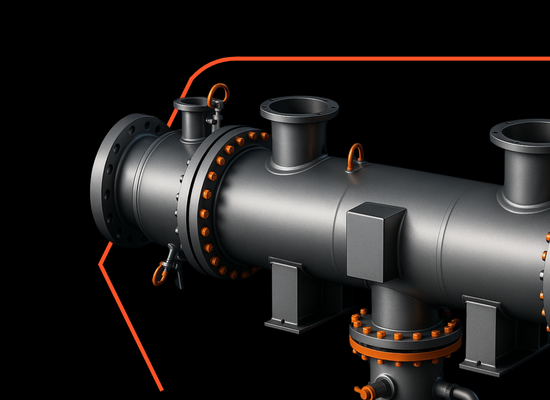
Heat Recovery from Waste Heat Using Heat Exchangers
How does industry recover waste heat using heat exchangers?
Modern industry generates enormous amounts of waste heat every day – from exhaust gases, hot process water, steam, or heated machine surfaces. Not long ago, most of this energy was irretrievably lost to the atmosphere. Today, however, rising energy costs and environmental regulations are driving companies to adopt solutions that enable its recovery. One of the key tools in this process are heat exchangers, which transform energy losses into a real source of savings and efficiency.
A heat exchanger is a device that allows the transfer of thermal energy between two media, e.g. hot exhaust gases and air or water, without direct mixing. This way, energy that would normally be wasted can be reused in production processes or auxiliary systems such as space heating, hot water preparation, or preheating raw materials.
Examples of industrial applications are numerous. In metallurgy, energy is recovered from furnace exhaust gases and redirected to preheat combustion air, significantly improving efficiency. In the chemical and refinery industries, exchangers capture heat from distillation processes and use it to preheat feedstocks, reducing fuel demand. In the food industry, they recover heat from pasteurization, brewing, or cooking processes and transfer it to heating systems or hot water production. In cement plants, exchangers installed in kiln gas exhaust systems allow energy recovery that can be converted into electricity, while in paper mills, heat from drying sections is reused in other production stages.
The benefits are clear – both economically and environmentally. Companies lower production costs through reduced consumption of primary energy, improve competitiveness by offering products manufactured with lower energy inputs, and cut CO₂ emissions, aligning with global carbon-reduction strategies and tightening environmental regulations. Additionally, reduced reliance on external energy suppliers strengthens independence and operational stability.
In summary, heat exchangers are becoming the foundation of energy efficiency in modern industry. They make it possible to transform waste heat – once seen as an unavoidable loss – into a valuable energy source that supports both business growth and environmental protection. In the face of energy transformation and rising costs, their role will only continue to grow, making them one of the most important elements of sustainable production.
Would you like to learn how to efficiently recover heat from waste heat? Contact our sales department: sales@hexonic.com




